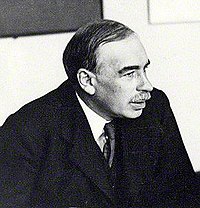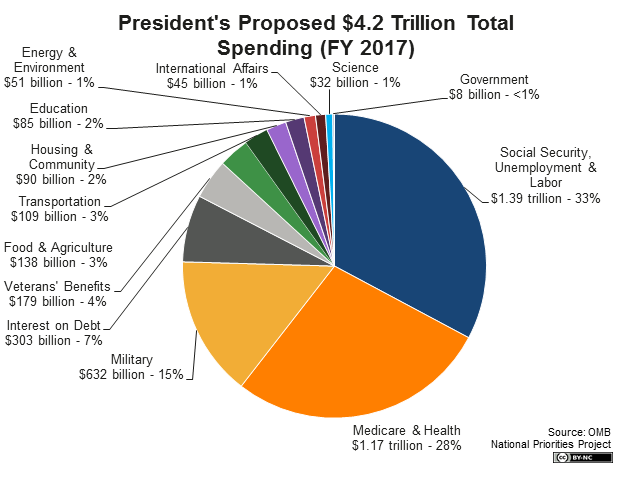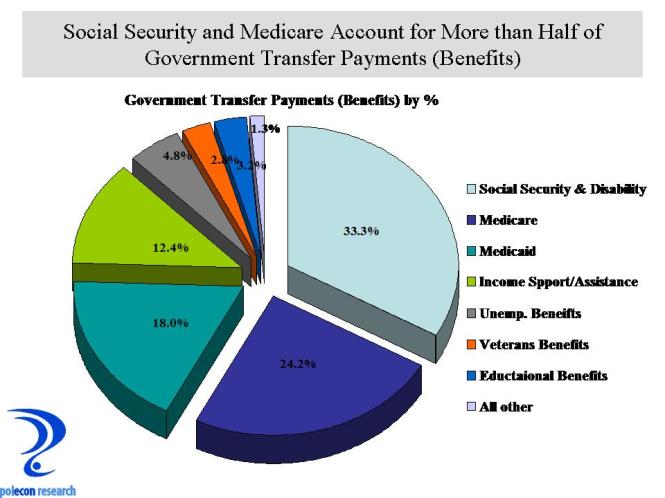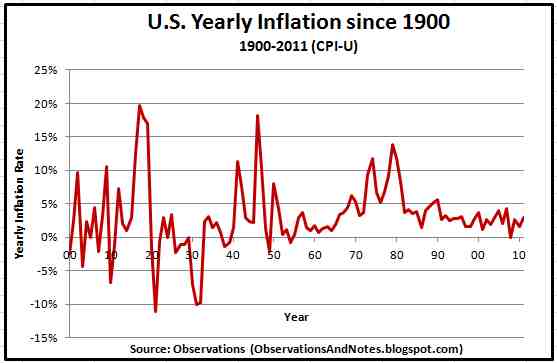Objective: Students will complete their Good Ol’ Days Projects today by presenting their timelines and skits.

Objective: Students will complete their Good Ol’ Days Projects today by presenting their timelines and skits.

Objective: Students demonstrate what they know about Monetary and Fiscal Policy by taking Quiz 6D. Students will work in their Project Teams
You will have two attempts to take this quiz. Check your answers after your first attempt and try again to improve your score. The highest score will be recorded.
When you have completed the quiz you will have the rest of the period to work in your project teams.
Objective: Students will learn about Fiscal Policy and how it can impact the economy by watching two videos and completing a worksheet. Students will work in their project teams.

Keynesian economics theory states that governments can influence economic productivity levels by increasing or decreasing tax levels and public spending.





Objective: Students demonstrate what they know about taxes, consumer spending and economic growth by taking Quiz 6C. Students will work in their Project Teams
You will have two attempts to take this quiz. Check your answers after your first attempt and try again to improve your score. The highest score will be recorded.
When you have completed the quiz you will have the rest of the period to work in your project teams.

Objective: Students will discuss the homework reading assignment LAP EC-009 Boom or Bust. Each team will discuss the Business Cycle Fact Sheet and decide if the statements are true or false. Teams will work on their projects.
http://www.moneycrashers.com/leading-lagging-economic-indicators/
http://www.investopedia.com/video/play/business-cycle/

Work in your teams to answer the questions on Business Cycle Worksheet
http://www.socialstudieshelp.com/eco_business_cycle.htm


Objective: Students will demonstrate what they know about Consumer Spending and Unemployment by taking Quiz 6B
You will have two attempts to take this quiz. Review your answers after the first attempt and take it again to improve your score. The highest score will be recorded.
When you have completed both attempts you can use the rest of the period to work on your project with your team.
Objective: Students will discuss the readings on Interest Rates and will work with their teams to answer the questions on the Interest rate Worksheet.
Suppose we buy a 1 year bond for face value that pays 6% at the end of the year. We pay $100 at the beginning of the year and get $106 at the end of the year. Thus the bond pays an interest rate of 6%. This 6% is the nominal interest rate, as we have not accounted for inflation. Whenever people speak of the interest rate they’re talking about the nominal interest rate, unless they state otherwise.
Now suppose the inflation rate is 3% for that year. We can buy a basket of goods today and it will cost $100, or we can buy that basket next year and it will cost $103. If we buy the bond with a 6% nominal interest rate for $100, sell it after a year and get $106, buy a basket of goods for $103, we will have $3 left over. So after factoring in inflation, our $100 bond will earn us $3 in income; a real interest rate of 3%. The relationship between the nominal interest rate, inflation, and the real interest rate is described by the Fisher Equation:

Work with your teammates to complete Nominal Interest vs. Real Interest Rate Worksheet
Objective: Students will discuss the readings on Unemployment with a partner and share what they discuss with the class. Students will work in their project teams.

Objective: Students demonstrate what they know about taxes, consumer spending and economic growth by taking Quiz 6A. Students will discuss the concept of business expansion.
You will have two attempts to take this quiz. Check your answers after your first attempt and try again to improve your score. The highest score will be recorded.
When you have completed the quiz you will have the rest of the period to work in your project teams.
Objective: Students will work in their project teams to read the assignment below and be prepared to summarize the key concepts at the beginning of the next class.
Each team will identify the key learning in the highlighted sections you have been assigned below and will present them at the beginning of the next class.
Everyone will be responsible for taking notes on what is presented
Objective: Students will learn about inflation and how it impacts the economy by reflecting on and discussing the homework assignment and watching videos.
http://www.investopedia.com/articles/06/gdpinflation.asp

Positive Impacts of Inflation
http://www.investopedia.com/ask/answers/111414/how-can-inflation-be-good-economy.asp
http://www.investopedia.com/video/play/how-can-government-control-inflation/
Objective: You will have 30 minutes in class today to complete your Group Plan and Contract for the Good O’l Days project. Turn them in to Google Classroom before the end of the period.
Objective: You will have one attempt to demonstrate what you know by taking Test2 covering:
When finished with the test, students will work in their project teams on their Group Plan and Contract due on Friday April 21, 2017.
Your User ID is: jfk[student#]
Your Password is: 8digit birthday
Objective: Students will learn to identify different types of taxes and the level of government that levy them by completing the Tax Note Catcher during class discussion.

The Good Ol’ Days project helps students to develop an understanding of economic policies and measures through a study of present economic indicators and past economic events.
Each student will individually measure the health of today’s U.S. economy, and each team will research economic events that took place during a different assigned time period in the past 100 years.
Each team will study what caused these events; how government, businesses, and the American family responded to these events; the overall health of the U.S. economy during the time frame; and how good (or bad) life was during the time period as a result of economic events.
After conducting extensive research, each team will prepare a presentation/skit that explains what they have learned. The team presentations will be video recorded, and the video will be shared with eighth grade social studies students.
Team Assignments
Time periods
- 1900-1929 Team 1
- 1930-1959 Team 2
- 1960-1989 Team 3
- 1990-2017 Team 4
Each student will compose a 2-page individual written reflection piece that requires him/her to consider the purpose of studying economic indicators, policies, and events of the past. Cite your sources as you answer the following questions:
- What’s the benefit of looking at economic indicators and policies over time?
- Why should we learn how government and businesses cause and/or respond to economic events?
- Why should we learn how the American family can be affected by economics?
April 17 & 18 2017
- Briefing – Taxes
- Project #6 Introduction Create a Project Plan and Team Contract
- Teamwork
April 19 & 20, 2017
- Objective Exam
- Teamwork
April 21, 2017
- Teamwork – Project Plan and Contracts Due
April 24 & 25, 2017
- Briefing on Inflation
- Teamwork
April 26 & 27, 2016
- Briefing – Consumer Spending
- Briefing – Economic Expansion and Contraction
- Teamwork
April 28, 2017
- Quiz 6A Gross Domestic Product, Economic Expansion and Contraction
- Teamwork
May 1 & 2, 2017
- Briefing – Unemployment Rates
- Teamwork
May 3 & 4, 2017
- Briefing – Interest Rate Fluctuations
- Teamwork
May 5, 2017
- Quiz 6B Consumer Spending and Unemployment Rates
- Teamwork
May 8 & 9, 2017
- Briefing – Briefing – Business Cycle
- Teamwork
May 10 & 11, 2017
- Briefing – Monetary Policy
- Teamwork
May 12. 2017
- Quiz 6C Interest Rate Fluctuations and Business Cycle
- Teamwork
May 15 & 16, 2017
- Briefing – Fiscal Policy and Government Expenditures
- Teamwork
May 17 & 18, 2017
- Teamwork
May 19, 2017
- Team Presentations (Be ready to go at the beginning of class)
- Individual Reflections Due
May 22 & 23, 2017
- Final Exam Review
May 24, 2017
- To Infinity and Beyond
May 25 & 26, 2016
- Final Exam
Objective: Students will demonstrate what they know about Fixed, Variable Costs, Breakeven and Organized Labor.
Click here for an interactive World Atlas
The formula is:
In your teams complete the Currency Exchange Scavenger Hunt
Record your answers on the Exchange Rate Scavenger Hunt Answer Sheet
Use these Exchange Rates to calculate the currency exchanges.
Objective: Students will discuss the role of Organized Labor in business by reading LAP-EC-005 Get United and completing the Organized Labor Notecatcher.

Project Overview: Students will explore international vacation destinations to develop an understanding of exchange rates and the value of the dollar in other countries. Each team will conduct thorough research of multiple vacation destinations outside of the United States and then select the one that team members believe would allow a person to get the most for $4000. The team will then develop a non-PowerPoint/Google Slides presentation that creatively explains their international vacation destination choice, incentives involved, the exchange rate, and expenses incurred during the week-long vacation.
After conducting extensive research, each team determines where in the world one individual could get the most vacation outside of the United States for $4000/person. The team must consider:
- round-trip transportation
- lodging for six nights
- three meals per day for seven days
- cost of tourist activities/excursions
- ground transportation in country
After determining the most economical international vacation setting, the team creates an presentation to explain the reasons for choosing their vacation destination. Each team should choose how they want to present their choice using any presentation style other than a PowerPoint or Google Slide show
Include the following information in your presentation:
- List all of the international destinations that were considered as possible vacation alternatives. (You must evaluate at least 3 locations)
- Explain the rationale for the vacation destination selected (use a Decision Matirx Template)
- The vacation destination, mode of transportation, type of lodging, source of meals, and possible tourist activities/excursions.
- Financial and non-financial incentives to go to the chosen international destination.
- Listing of expenses: transportation, lodging, meals, and any tourist activities that the team has selected in U.S. Dollars and the local currency.
- The vacation destination’s exchange rate. Click here for an exchange rate calculator. Express all expenses in U.S. Dollars and the local currency.
- An explanation of what created differences in money values in the U.S. versus the vacation destination.
One presentation alternative is an interactive Glog/digital poster using Educator Code 6BBCBU that “sells” your vacation destination. The Glog/poster must be creative.
Another alternative is Prezi
Or choose one of these 5 Prezi Alternatives
Presentations will be graded using Oral Presentation Rubric
April 4 & 5, 2017
- Project #5 Introduction
- Briefing – Organized Labor
- Teamwork
April 6 & 7, 2017
- Quiz 3B Fixed and Variable Costs, Breakeven Analysis, Organized Labor
- Briefing Exchange Rates
- Teamwork
April 10 & 13, 2017
- Teamwork
April 11, 2017 No Classes
April 12, 2017 (Periods 2 & 4 Only 30 Minute Classes)
- Teamwork
April 14, 2016
- Seven Days & Six Nights Presentation

You will have the first half of the period to finalize your team presentations.
Alternate schedule on my Home page for all of this week.
Teamwork for the China Dynasty Project
Objective: Students will demonstrate what they know about Productivity, Gross Domestic Product and Standard of Living by taking Quiz 3A.
Objective: Students will discuss International Trade and the barriers that can limit it based on the homework reading and capturing the key concepts using the International Business Note Catcher.
Objective: Students will demonstrate what they know about Fixed, Variable Costs, Breakeven and Organized Labor. Students will discuss Quality and Quality Controll based on the homework reading using the Quality Notecatcher

Project Description:
Individually, students will conduct secondary research to develop a written report comparing the production of goods in the U.S. to the production of goods in China.
Each student will individually conduct secondary research and develop a three-page written report (double spaced 12 pt Times New Roman font with cited sources and bibliography) covering the following concepts that compare the production of goods in the U.S. to the production of goods in China:
- Comparison of China and U.S. workforces (size, education, income, union vs. non-unionized, trends in productivity, etc.)
- Reasons U.S. companies have goods produced in China and reasons China chooses to produce goods for U.S. companies
- How U.S. companies get goods produced in China (import/export from other companies, wholly owned subsidiaries, etc.)
- How off shoring impacts the domestic economy
- What problems U.S. companies encounter with goods produced in China
- How quality issues with goods produced in China could be addressed
- Sources to help you get started (you may use one of these and find at least three more on your own minimum of 4 cited sources)
- Doing Business in China: Five tips for Success
- Ten Principles for Doing Business in China
- American Manufacturers Should Get Ready to Each China’s Lunch
- Adjusting to China
- The China Vision
The report will be graded using this Written Report Rubric
The Oral Presentation will be graded using this Oral Presentation Rubric
After completing their individual reports, each team of students will be given a stuffed animal and assigned the task of determining where they want to produce that item—in China or in the U.S. To make their decision, each team will need to consider a number of factors, including:
After considering these factors, each team will develop and use a decision matrix to select where to produce its stuffed animal and then present an oral report explaining:
Time Frame
03/03/2017
- Test 1
- Project Introduction
03/06 & 07/2017
- Briefing Specialization of Labor & Productivity
- Individual Research
03/08 & 09/2017
- Briefing on Fixed and Variable Costs
- Individual Research Continued
03/10/2017
- Briefing Standard of Living/GDP
- Individual Research Continued
- Individual report due next class
03/13 & 14/2017
03/15 & 16/2017
- Quiz 3A (Outputs, Productivity, Standard of Living)
- Briefing on International Business
- Teamwork Project Contract and Plan Due.
03/17/2017
- Briefing on Organized Labor
- Teamwork
03/20 & 21/2017 (30 min classes PARCC Testing)
- Quiz 3B (Organized Labor, Fixed and Variable Costs, Breakeven Analysis)
- Teamwork
03/22/2017 (30 min classes PARCC Testing)
- Teamwork
03/23 & 24/2017
- Team Oral Presentations
Objective: Students will learn about Gross Domestic Product and Standard of Living by reading articles and watching videos. Students will capture what they learn using the Gross Domestic Product Standard of Living Note Catcher. Students will continue their individual research for the paper due on March 13 & 14, 2017.
Watch these two videos:
Objective: Students will learn how to identify Fixed cost, and Variable costs and calculate total cost total revenue the break even point.
Working with a partner, complete the Fixed and Variable Cost Worksheet due at the end of the period.
Fixed Costs = Costs of production that do not change with the volume of output produced
Examples of Fixed Cost:
- Rent
- Insurance
- Salaries
- Benefits
Variable Costs = Costs of production that change with the volume of output produced
Examples of Variable Costs:
- Raw Materials
- Packaging
- Shipping
- Hourly Wages
Objective: Students will explore how to improve productivity in a work environment. Working collaborative in their project teams they will review a case study and make recommendations for productivity improvements.
Assignment: In your project teams read and review the Productivity Probe Use the information in the Improving Productivity Guide. When you have made a recommendation turn it in to the Google Classroom assignment.
When finished with the Productivity Probe you may work on your Individual Report due on March 17, 2017
Objective: Students will demonstrate what they know by taking Test1 covering Economics Review, Culture impact on economics, Supply and Demand, Prices, Innovation, Opportunity Cost, Decision Matrix. Students will be introduced to the next project China Dynasty Project #4.
Objective: Students will work in their teams to finalize their team presentations for 45 minutes and individual project diaries.
Your User ID is jfk[student#]
Your Password is 8digit birthday
There are 20 questions on the quiz and you have two opportunities to take this quiz. The highest score will be the grade recorded.
Objective: Students will share the results of the stakeholder survey and finalize their decision matrix for their final recommendations and presentation.
Objective: Students will discuss what they read regarding Opportunity Costs and explore the concept of marginal utility by participating in a class activity and reflecting on the results.
Click here for Opportunity cost Power Point
Class Work:
Objective: Students will finish presenting their Photo Hounds project team videos. Students will discuss Innovation and its importance to the economy using the two homework reading assignments. Students will start working on Make the Most of It Project #3.
Homework questions
Class work:
In your project teams review the project requirements, create a Group Contract and Project Plan.
Project Description: In this project, students will develop innovation and decision-making skills as they determine the best use for a vacant building in their community.
In addition to team activities, each student will also keep an individual diary of events throughout the project to reinforce individual understanding of and participation in the project. The diary should identify what the student did each day of the project and what they learned about making decisions that impact the community.
02/21 & 22/2017
02/23 & 24/2017
02/27 & 02/28/2017
03/1 & 2/2017
In order to determine the best use for the vacant building, each team must complete a series of steps. The steps involved are:
To ensure that all team members are engaged in the project, each team member will keep his/her own written diary of events. Each student will compose a one-to-two paragraph diary entry each day describing team activities and his/her own contributions to the team.
Objective: Students will complete and turn in the Supply & Demand project that demonstrates their understanding of the impact of shifts in supply and demand. Students will work to complete the Photo Hounds Project that will be presented next class.
The Photo Hounds Video is due on Friday February 17, 2017. Part 2 the Individual report on incentives for a company to “Go Green” is due on February 21 & 22, 2017
Objective: Students will demonstrate what they have learned about Supply and Demand and the role of Prices in the economy by taking Quiz 1B. Following the quiz students will work in their teams to complete the Photo Hounds video project.
Objective: Students will learn and discuss the role that price plays in economic systems by reading information found in LAP EC-012 When More is Less and discussing their responses to the Total Recall questions on pages 5 & 8:
Class Discussion:
Objective: Students will learn and discuss the law of supply and demand by reading information found in LAP EC-011 Supply and Demand and discussing their responses to the Total Recall questions on pages 4 & 8
Your User ID = jfk[Student #]
Your Password = Your 8 digit Birthday
Objective: Students will learn and discuss the impact of economic incentives on economic activity by reading information found at Economic Incentives in Our Community and discussing their responses to the homework questions:
Click here for Incentives Note Catcher
Click here to play Incentive Tic Tac Toe
Students will work in their project teams to begin work on the Photo Hounds project.
Class Work: Create your Group Contract and Plan due on February 6 & 7, 2017
Ovjective: Students will investigate how economic incentives can influence how people make decisions on how to use economic resources by reading three articles.

Project description
Students will explore the world of celebrities and the paparazzi in order to develop an understanding of key economic concepts including supply and demand, the functions of prices, incentives, and the role of culture in the production, distribution, and consumption of goods and services. In teams, students will record infomercial videos that creatively address these key concepts as well as explain what they theorize celebrities could do to solve the problem of the pesky paparazzi.
Objectives of the project:
Supporting Questions to be addressed in your team’s video:
Each team conducts research and develops a 5-minute infomercial video creatively depicting their team’s answer to the driving question. To ensure that students master the economic concepts related to this project, students must also address the supporting questions through their video.
In addition to being evaluated by the teacher using the rubric, fellow students also screen and vote on each team’s video. The class selects the best idea for keeping the paparazzi at bay. Videos will be evaluated using Video Rubric
After completing the group portion of the project, each student writes a one-page report in which s/he applies the concepts of incentives and prices to businesses who are considering “going green”. What incentives influence a business’s decision to go “green?” How are prices influenced by a business’s decision to go “green?” How will deciding to go “green” impact supply and demand for a product? Written Reports will be evaluated using Written Report Rubric
Link your Individual Report to the assignment in Google Classroom.
Timeframe
02/1 & 2/2017
02/6 & 7/2017
02/8 & 9/2017
02/10/2016
02/13 & 14/2017
02/15 & 16/2017
02/17/2017
Objective: Students will investigate the cultural dimensions and culture’s impact on economic decisions by reading On Top of the World and exploring the Geert-Hofstede Cultural dimensions of different cultures. If you do not finish in class complete the worksheet for homework.
Using the country you identified in the Do Now, complete the second page of the Culture Worksheet by researching where it is on the Geert-Hofstede Cultural dimensions and how these cultural dimensions affect business and economic decisions.
• Power Distance measures the extent to which the less powerful members of organizations and institutions (like the family) accept and expect that power is distributed unequally.
• Individualism is the one side versus its opposite, collectivism, that is the degree to which individuals are integrated into groups.
• Masculinity versus its opposite, femininity refers to the distribution of roles between the genders which is another fundamental issue for any society to which a range of solutions are found.
• Uncertainty Avoidance deals with a society’s tolerance for uncertainty and ambiguity; it ultimately refers to man’s search for Truth.
• Long-Term Orientation is the fifth dimension of Hofstede which was added after the original four to try to distinguish the difference in thinking between the East and West.
The Corruption Perceptions Index 2016 serves as a reminder that the abuse of power, secret dealings and bribery continue to ravage societies around the world.
The Index scores 177 countries and territories on a scale from 0 (highly corrupt) to 100 (very clean). No country has a perfect score, and two-thirds of countries score below 50. This indicates a serious, worldwide corruption problem. Hover on the map in the link to see how your country fares.
Objective: Students will complete the reading and Lemonade Stand activity and write a reflection on the economic activities they experienced as a result of the simulation.
Assignment:

Objective: Students will explore economic resources and decision making by running a virtual lemonade stand for a 30 day simulation. Students will record their daily sales and costs on a spreadsheet and reflect in writing on their results.
Driving Question: How can something as simple as Lemonade involve economics?
Choose your own teams of two people. Each group will strategize how to sell lemonade and determine the key economic activities needed to be successful; Production, Distribution, Exchange, and Consumption.
You will be completing two rounds of selling lemonade for 30 days. Each day you will receive a weather forecast on the TV. Know that the forecast is not always correct. One person on your team will control the game and the other will record the results on the tracking sheet. Use two computers to run your simulation, one for the game and one for the tracking sheet.
Switch roles for round 2.
Person 1: Click here to start the Lemonade Game. Try it out for a few days before you start the full 30 day round. When your are ready to start refresh your browser screen and start the game over. If you close your browser you have to start over.
Person 2: Track your progress using this Lemonade Stand Tracking Sheet Save a copy and share it with your partner. When complete add the link to your Google Classroom assignment.
Each day you sell lemonade your team will need to answer these questions.
Identifying the economic activities involved in the activity on page 2 of the Note catcher
When you have completed the simulation answer the reflection questions on the Note catcher.
You will have time next class to complete the simulation. During the last 20 minutes of the next class we will debrief as a class. Your team should be prepared to discuss the following:

See Mr. Polete or Mrs. Count to get your login and password to take the tests you are registered to take.
Be sure to send or share your files with Mr. Polete or Mrs. Cpimt before 3:00pm on Friday January 20, 2017.
In the ever-changing world of business communication and demand for instantaneous information, discuss the issues surrounding cloud computing in relation to storage, access, and security. Be prepared to argue the affirmative, that cloud computing would positively answer the demand for instantaneous information; and be prepared to argue the negative, that cloud computing is not the answer to instantaneous information.
Consumers are shopping at traditional brick and mortar stores, on Web sites, and increasingly through mobile applications. Does the availability of a mobile application provide a business with a stronger consumer base and higher revenue? Argue either the affirmative or negative that having a mobile application increases consumer base and revenue for businesses
You have been asked to give a presentation to a group of small business leaders in your community on how the repeal of the Affordable Care Act will likely impact their community.
Join the class using your class’ code:
Period 2 66ue70
Period 4 wcjvtuj
Period 7 a0gvf13
As you get ready for the rest of the 2016-2017 school year you should take a moment to reflect on the first semester.
Objective: Students will write a reflection of Semester 1 and identify strategies this semester that will help them be on track to graduate.